 Congelato is the Italian word for frozen. Freddo means cold (sort of the way Don Michael Corleone felt toward his brother, Fredo). Freddo is the way Italians feel all the time, even in when it's warm out. It's a puzzle and a wonder that they have embraced something so cold and frozen as gelato. If you travel to Italy in summer--you--as an American, are going to want to do anything you can to keep cool. Not that Italians want this. They are always cold anyway. Italian air conditioning isn't really cold by American standards, either. Let's just say most Americans will get pretty heated on this subject. Even in the winter, temperatures can be mild to warm for American travelers, while Italians get out their scarves and puffy jackets in early September. But wait... I think I get it! Perhaps they are always wearing puffy jackets and scarves simply because they eat SO MUCH gelato each and every day, sometimes more than once a day. And, unlike in the States, where ice cream shops close down during winter, in Italy, the gelaterie are open all year long! Perhaos this lowers the core body temperature of Italians! Ah-HA! I think I've discovered something here. Maybe that's the difference--we can take the cold weather more, simply because we don't eat as much ice cream in the cold months as Italians do. Perhaps the reason gelateria suddenly offer cioccolato caldo in winter is so Italians can bring their core body temperature back up toward normal after having a winter gelato treat! (By the way... cioccolato caldo is amazing in Italy... made from real melted chocolate). So, what frozen treats await the traveler in Italy? I'll get into the types of frozen treats Italy has to offer, but first a little... History of Ice Cream  Italian Ice Cream Vendor in Wales. Italian Ice Cream Vendor in Wales. Believe it or not, Americans have been eating ice cream since the 1740s, and flavored icy treats were in many cultures dating back over a thousand years. Many of the Italian immigrants arriving at Ellis Island were already well aware of the pleasures of ice cream... or gelato, as they called it. Perhaps knowing this, officials at Ellis Island started serving immigrants ice cream because they thought it was "an efficient method for making our future citizens more at home in their new environment.” Of course, to Italians, the cold treat was nothing new. Iced desserts actually date back over a thousand years (even in ancient Rome) and they are common in many cultures. The history of gelato dates back to frozen desserts in Sicily, ancient Rome and Egypt (part of the Roman Empire in 30 BC) made from snow and ice brought down from the volcanoes Etna and Vesuvius, and covered with honey or fruit juices. Some stories claim that Nero, the Roman Emperor, invented a type of sorbet in the first century AD by having runners along the Appian Way pass buckets of snow--relay race style--from the mountains to his palace, where it was flavored with honey and wine. During the Italian Renaissance, the great history of modern Italian gelato really began to take off. The Florentine Medici family held a contest for the best frozen dessert. A peasant named Ruggeri, a chicken farmer and amateur chef, took part in the competition, creating a dessert of fruit juice and ice--similar to sorbet. Ruggieri won the competition which immediately brought him fortune and fame after Caterina de Medici took him with her to France. Caterina was using him to shame the over-inflated egos of the French chefs serving the French court and prove that Florentines made the best desserts. In fact, Ruggieri, made his creation for Caterina on her wedding day when she married the future King Henry II of France. Later in the 1500s, the Medici commissioned artist and architect Bernardo Buontalenti to create a culinary event for the King of Spain. Buontalenti came up with a creamy frozen dessert that we now call gelato. Because of this, many consider Buontalenti as the inventor of the gelato we enjoy today. (Another great Italian innovator!) In 1686 the Sicilian fisherman Francesco Procopio dei Coltelli perfected the world's first first ice cream making machine--and no, it didn't plug in. (Italians invented a lot!) Coltelli's fame made him a rich man and he soon opened an incredibly successful cafe in Paris where his creamy gelato gained a wide-spread reputation. However, it wasn't until the 1920s and 1930s, when the first gelato cart was developed in the northern Italian city of Varese (take that, Good Humor), that gelato started to become popular with more and more people in Italy itself. In 1770, just before the American Revolution, Giovanni Basiolo brought gelato to New York. He brought two kinds of of gelato-- one made by blending milk with coffee, chocolate, or pistachio, and another made with water and fruits. In 1846, the hand cranked ice cream machine was perfected and made the velvety and creamy dessert simple, yet fatiguing to produce. Types of Frozen Delights  During the 1900s, the advance of technology helped ice cream become even more widespread--and in all seasons of the year. The introduction of ice houses, faster shipping, and horse-drawn ice cutters led to a drop in the price of ice. This led to a huge market for ice production and distribution. In America, the ice storage houses shut down and people no longer harvested ice from frozen ponds in the winter months. Many people could finally afford iced treats during the hot summer months and by the 1840s, ice cream was being sold on the streets of both Europe and America. Italians immigrants are credited with creation of ice cream and they became strongly associated with the production and selling of ice cream in both Europe and America. In England, where Italians emigrated in large numbers after 1860, the selling of ice cream was seen as a predominantly Italian occupation, with immigrants from Rome and Naples owning most of the ice cream carts. In fact, the Italians were responsible in exporting ice cream vendors in many European counties and to America. So, Italians not only brought us pizza and pasta, but ice cream as well!  Semifreddo Semifreddo translates as semi-cold. You will find this light and mousse-like ice cream in the gelateria also. Even though it's lighter and softer it's actually colder. Although fine in a cup, if you order semifreddo in a cone it will melt a lot faster than gelato. You'll know it's semifreddo because it is usually mounded very high in the tub... much more so than gelato.  Gelato This is what everyone thinks of when they think of Italian ice cream. Gelato (plural, gelati) is the Italian word for ice cream, coming from the Latin word for frozen, gelatus. Gelato can be made with milk, cream, various sugars, and flavoring such as fresh fruit and nut purees. It is often made with skim milk and is generally lower in calories, fat and sugar than American style ice cream. Typically, gelato—like any other ice cream—needs a stabilizing base. Egg yolks are used in yellow custard-based gelato flavors, including zabaione (also, zabaglione) and crema al caramello (creme caramel). Over 55% of the gelato made in Italy is hand-mixed. There is an enormous variety of flavors. You will often find a gelato shop open during lunchtime, when other shops and even restaurants are closed. So, if you're hungry and need fuel, your choices are going to a bar (more like a breakfast/lunch bar) where many also have gelato, or go to a gelateria! The same goes for the end of the day. Most restaurants don't open until 7:30 - 8:00 pm at night, so feel free to let the kids have a gelato to hold them over at around 5 o'clock. The servings are usually smaller than Americans are used to and your kids won't get too filled up before dinner. You can order gelato in a small cone or in a cup... but there's a bit more to know. First, you tell the cassiere (cashier) what you want (how many cones or cups, how many flavors) then you pay for it. The cassiere will give you a receipt. Then you take your receipt over to the person scooping the gelato (they are usually, but not always, two different people). Now you can ask for either a cup (coppa, coppe for plural) or cone (cono, coni for plural). You can also tell them "piccolo" for small "grande" for large. For mixing flavors try, "mezzo _____ e mezzo ____" for "half chocolate and half vanilla" or whatever flavors you want to try. It's normal to ask for two flavors in a single cup. So, it might go like this... "Una piccolo cuppa... mezzo cioccolato, mezzo coco.... e due coni con crema". (One small cup, half chocolate, half coconut... and two cones with custard cream). I'll go over some flavor names: Chocolates
Miscellaneous
 Granita Granita (or granita Siciliana) is a semi-frozen dessert made from sugar, water and various flavorings. Originally from Sicily, it is available all over Italy in somewhat different forms. It is related to sorbet and Italian ice; however, in most of Sicily, it has a coarser, more crystalline texture. The texture can vary from town to town, even across the island of Sicily. This is largely the result of different freezing techniques: the smoother types are produced in a gelato machine, while the coarser varieties are frozen with only occasional agitation, then scraped or shaved to produce separated crystals. Although its texture varies from coarse to smooth, it is always different from the one of an ice cream which is creamier, and from the one of a sorbet, which is more compact; this makes granita distinct and unique. 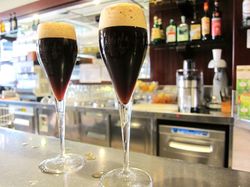 Shakerato It makes sense that the Italians would invent a most exquisite coffee drink for the summer. It's a shaken-over-ice, slightly sweetened espresso called shakerato, served in a stemmed glass, prepared in bars all over the county. The shaking process yields a thick crema that floats on the espresso. In Italy, ice is viewed with suspicion, and you'd never be served a tall glass of coffee over lots of ice, the way iced coffee is in the U.S. Italians think that would cause a serious stomach ache. Make your own:
Shake the hot espresso, ice, and sugar syrup energetically until ice is almost completely melted--you'll know by the sound of the cubes. Strain into a stemmed glass. Don't try to make more than two or three at a time.  Biscuit Tortoni Biscuit Tortoni is an ice cream made with eggs and egg whites, along with heavy cream, often containing chopped cherries or topped with minced almonds or crumbled macaroons. It is believed to be named after an Italian café owner in Paris in the 18th century. I remember this cold treat from my childhood--every really good Italian restaurant offered either spumoni or tortoni for dessert, and tortoni was my personal favorite. The almond flavor in tortoni is the star.  Sorbetto Sorbetto (sorbet in English) is a frozen dessert made from a simple syrup for sweetening, water and flavored with fruit juice, fruit purée, fruit nectar, wine, or liqueur. Unlike gelato or ice cream, it never contains milk or cream. Although considered a low fat alternative to gelato, the additional sweetness can itself add calories. Some think that sorbetto is exactly like sherbet as Americans know it. It isn't... sherbet contains dairy products. 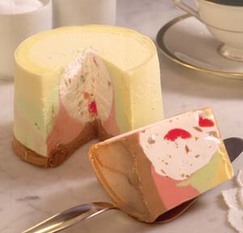 Spumone Spumoni is an Italian dessert made of layers of gelato, whipped cream, candied fruit, and nuts. In America it's spelled spumoni. It contains different layers of flavors and ingredients. In traditional style, it is made in three layers: chocolate, pistachio, and cherry. The chocolate layer would contain bits of chocolate shavings or crushed hazelnuts. The pistachio layer always includes crushed pistachios. The cherry layer has candied cherries in it. It is also made with other fruit layers.  Grattachecca Grattachecca literally translates as scratchy. It is a frozen street treat popular in Rome. It's not ice cream.... it's ice--shaved ice. The vendor stands in front of a large block of ice and scrapes the block with a metal shaving tool. Once the shaved ice is in the plastic cup, a flavored syrup and fruit are added. Flavor choices are usually black cherry, tamarind, mint, barley water, coconut or lemon. In the early 1900s, large blocks of ice called checca were used to cool food and drink. An innovative vendor came up with the idea to grate, or grattare, the ice and make a drink. This is where the name grattachecca came from.  Tartufo Tartufo translates as "truffle" and is hand sculpted to look like a very large one. It is made with two flavors of ice cream and typically has either fruit syrup or frozen fruit—typically raspberry, strawberry or cherry--in the middle. This frozen dessert originates from Pizzo, Calabria. Chocolate is melted poured over the ice cream ball after being cooled. The outer coating may also be cinnamon or cocoa--giving a more realistic truffle look--with the bomba shape rolled in cinnamon or cocoa before freezing. There are usually chopped or crushed nuts on top.  Affogato If you're an espresso lover, try an affogato (Italian, drowned). Basically, it's a scoop of vanilla gelato drowned with a shot of hot espresso. Some variations also include a shot of amaretto or other liqueur.  Zuccotto Zuccotto is an Italian dessert with origins in Florence. Zuccotto is a semi-frozen, chilled dessert made with semifreddo, brandy, and spongecake and often flavored with espresso--essentially, it's an ice cream bombe. The word Zuccotto is a joining of two words.... zucca (pumpkin) and cotto (cooked). Some think it's a corruption of zucetto (skullcap), which happens to the the shape of this cold treat. It can be frozen, then thawed before serving. This dessert is traditionally made in a special pumpkin-shaped mold. In the end, there are always alimentari, bar-tabacchi and gelato trucks that will have basic flavors of gelati and an offering of Cornetto cones and other ice cream pops in their freezer display case. There are more than enough ways to cool down when you visit la Bella Italia. But just remember, if you get brain freeze and get too chilly, there's always a puffy jacket with your name on it.... That's when you really know that you've become a local. --Jerry Finzi If you enjoyed this article, please SHARE it and LIKE it on your favorite social media site. Ciao! We also have pages on: Google+ Copyright, 2015-2019, Jerry Finzi/GrandVoyageItaly.com - All rights reserved
1 Comment
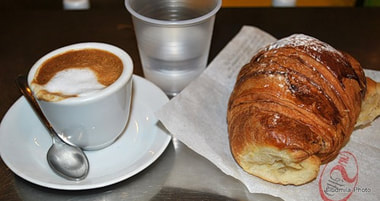 A typical Italian breakfast A typical Italian breakfast Just how did this riposo thing get started in Italy (and other Mediterranean countries)? Many attribute it to the heat in the middle of the day--which can get extreme in summer--combined with the typically heavy meals eaten as lunch in the Mediterranean diet. Simply put, people get drowsy after a big meal. Italians supposedly are embracing this biological fact as part of their natural clock... napping when their body says to nap, whereas Americans are out of tune with their natural rhythms. When you speak to Italians and understand their lifestyle you get a clearer picture of what is going on. First of all, most have a colazione (breakfast) either at home or at a bar on the way to work. Espresso and sweet cakes. Sugar and caffeine. They have coffee breaks too. The typical worker will go out to a "bar" for for both breakfast and their coffee break. It's a social thing that Italians can't live without, and shouldn't. It's part of their culture. Italians tend to eat these light breakfasts (and some going without) but recoup with a larger lunch than other cultures. One of the most surprising--and often frustrating--things voyagers to Italy discover is the long midday rest period (similar to the siesta in Spain). It northern Italy this period is called riposo or la pausa, and in the south is called pennichella or pisolino. Riposo means to rest, pausa to pause or take a break. What will surprise (and possibly inconvenience) Americans is that most shops and workers close and go home to for il pranzo (lunch), typically, the largest meal of the day. This closure can include restaurants, clothing stores, gift shops, grocery stores (alimentari), banks, pharmacies and even some post offices. Often a business closes at noon or 1pm and doesn't open again until 3-3:30pm or later. Small towns can look like ghost towns during riposa. Unlike in the U.S., Italians don't rotate their staff during riposa. The shop simply closes. American business logic would leave at least one employee in the shop while another takes his lunch, rotating their shifts. In Italy this isn't even considered. Voyagers need to be ready for this. Even places you'd think wouldn't--or shouldn't--close up tight for a few hours, like car rental offices. In Italy, car rental offices in Italy are merely brokers, who pay a fee to use the logos of larger companies. They are mostly local and very independent. They are often staffed by at most 2-3 people, with all closing up for riposa. In small towns you'll even see the local Polizia station closed for riposa. I experienced lunchtime closures while living in France years ago, but the French only take from 1-1/2 to 2 hours for lunch. In small towns throughout Italy, riposa might even last until 4 or 5pm. Restaurants might not open again until 6-8pm. In Italy, the average workweek comes in at only 36 hours with the maximum set at 40 hours. Overtime isn't permitted to go over 48 hours. Every worker gets 4 weeks paid holiday during August's ferragosto vacation period, as well as 12 national holidays. These are government standards. Indeed, workers are used to a very different pace in Italy. Voyagers need to adjust to this important difference. My issue is when the long riposo closures affect tourist oriented businesses in towns that normally attract tourists. Italians are rightly proud of their beautiful towns and cultural treasures and promote them for tourism, which makes up 13% of the Italian economy. If Italians want the tourist trade, then it seems they might stagger staff and keep things like restaurants, banks and other similar businesses open in these tourist towns. Luckily, more and more supermercarti (supermarkets) are open all day. Local, open-air markets are usually open early in the morning until an hour or so before lunch, but that's only if the town has a market day scheduled. You will see signs listing market times in local piazzi (town squares) for each town that has such markets. Market days are different from town to town. When in a particular town, you can try typing "(townname) mercati comunale alimentare" into Google Maps. This will help find local public food markets along with the days and hours they are open. Some travel bloggers will suggest visiting churches and museums during lunchtime--a bit difficult when traveling with an 11 year old boy who naturally turns into a grumpy, hungry beast at midday. We got into the habit of making sure we always had fixings for an impromptu lunch in our car. We also found that for some reason or other, gelateria throughout Italy are almost always open during lunchtime--Lord knows why. So, gelato and cold drinks became our early lunches on some days, picnics were the norm on most others. The exception to this is when visiting large cities like Rome or Florence. There are so many tourists there that many shopkeepers and restaurants have learned the tourist lunchtime trade is their busiest time of the day--so they remain open during riposa. But beware in the rest of Italy! I can't tell you how many times we came out of a morning's visit to a museum or other tourist site and couldn't find any place to sit and have lunch. The Lunchtime Saviors: Bars Virtually every place displaying the sign "Bar" in Italy is actually a place to get a very good breakfast or lunch. They are used by locals to buy espresso and sweet breads or cakes in the morning, but at lunchtime they offer snacks, panini (sandwiches), focaccia and other things that will satisfy anyone for lunch. How'd this little fact get past us? Perhaps because we were traveling with an 11 year old and like most Americans, have an aversion of dragging our son into a "bar". I assure you, in Italy the local bar is a very family friendly place to have an espresso, cold drink, snack or a bite to eat. Keep in mind that if you want to sit at a table and eat your food, you might get charged a little extra for sitting at a table and not standing at the bar or da portare via (for takeout). Also, bars don't usually have a menu or prepare the food "to order", but instead you select whatever they have in their showcases. It would be prudent for "bars" in Italy to promote the fact that they aren't a dark, seedy place for people chug-a-lugging beer, whiskey and wine, they way a typical American normally thinks of a "bar". It perhaps looks odd to the American eye to see a "bar" crowded with people in the morning, not knowing they are simply having their morning espresso, cornetto and exchanging some gossip with their neighbors. We suggest that the Italian Tourist Board offer signs to bars all across Italy saying "Breakfast & Lunch" in English for areas frequented by tourists.  Pranzo con la famiglia Pranzo con la famiglia To stay healthy, most health experts say, "Eat breakfast like a king, lunch like a prince and dinner like a pauper and you'll stay healthy." The Italians do the reverse. They either have no breakfast or have a sweet pastry with a cappuccino (only in the AM!) and have their largest meal during riposo. They could have a bigger breakfast that includes some protein (ham, eggs, etc.) some fat (butter, olive oil) and perhaps have a nice salad for lunch. But Italians aren't really into salads--and when they do have an insalata they don't use salad dressings... only oil and vinegar, and of course, they would never think of adding chicken or ham or cheese to an insalata even if it might add some protein. Because of their big lunch, they might also nap a bit during riposa. Traditionally, lunch (pranzo) is considered the main meal of the day (dinners are lighter). Pranzo starts with antipasti (appetizers), followed by a primo (first dish) which is normally pasta or risotto, and a secondo (second dish) which is normally a meat dish. These dishes are accompanied by one or more contorni, which are either a salad or a vegetable dish such as cooked spinach sautéed in olive oil, peppers and garlic. The whole meal is often washed down by a bottle of wine. Lunch is a relaxed time and is enjoyed by the whole family in small towns across Italy. In fact, middle and high school children are finished with school before the hours of riposa, so they can come home and have lunch with their family or are fed by their nonna. They also have a pausa during mid morning where they have a little panino or cheese and fruit as a snack. Younger children have a healthy lunch provided by the school and stay a bit longer. Young men--unless they work in a big city away from their family--typically live with Mama until they get married. Mama does all the cooking for them, unless like many men in Italy, are fine cooks themselves. Consider them lucky to be fed by Mama or Nonna when they go home for riposa. Obviously, this is a much more humane, relaxed, family-oriented culture. Of course, this brings us to dinner time. Don't even think of looking for a restaurant open and ready to serve dinner before 7 - 8pm. The further south you travel in Italy, the later people eat dinner. I remember before I lived in France, I had dinner at around 5:30pm. When I returned home, I started having dinners on European time... around 7:30. Our family still has dinner about an hour and a half later than most Americans. Italians are also in the habit of having an aperitivo starting at around 5-6pm, and in Northern Italy, the drinks are accompanied by small bites of various foods. They might not eat dinner at all, or have a light dinner at a restaurant or home after 8pm. The hours of restaurants reflect this cultural difference and open later than Americans are used to. In some southern towns, we rarely found restaurants open for dinner earlier than 8pm. For Italians, time isn't as rigid as for Americans. The opening hours listed for shops should be considered merely suggestions. These times are very loosey-goosey. If a shop lists its hours as 8-7 pm, you might not see the shop open until 9:30am. Here are some words that you might see on signs posting operational hours: giorni feriali Weekdays (literally, working days) settimanale Weekly quotidiano Daily ogni ora Hourly By the way, if you see an icon on these signs (and some street parking signs) that looks like a crossed hammer and sickle, it's not a symbol for communism, it simply refers to "workdays", meaning Monday through Saturday. If you see giorni festivi, simply festivi, or a tiny cross, that means Sundays and religious holidays (there are many that Italians close for... remember, it's a Catholic country... all religious holidays are National holidays even though less and less young Italians describe themselves as practicing Catholics). If you see a sign saying chiuso per ferie, it means closed for the holiday. The "holiday" in August means 4 weeks--for most of Italian workers. Shops close up and whole families go to beach resorts or camping. If you see chiuso per lutto, this means they are closed for mourning. Most shops are closed on Sundays whether they go to church or stay at home watching the soccer matches. A Commentary and Suggestions We need to understand this wonderful culture. I understand how Italians think of time as a flowing river and not a commodity to spend nor save. I understand about the midday heat--it's a very hot and humid country. In the past when agriculture was the major part of most Italians lives, it was respectful of nature and biological rhythms to rest in the middle of the day rather than waste a body's resources to the heat of the day. But this is a modern Italy. There is air conditioning--that actually works! (In fact, we recently installed the same type of air conditioning units as in Italy, which are efficient and effective!) Italians have the beauty and history of Italy to grow the their economy--through tourism. Consider that tourists from other countries have certain expectations, even those visiting to explore your wonderful lifestyle. There might be a certain degree of lost jobs profits in your riposa--but I am speaking only of areas where tourism is a mainstay of your local economy. There is a way to embrace your culture while growing your nation and moving forward to the benefit of all Italians. The World Travel & Tourism Council says that tourism brings in over $203 billion a year for Italy, an impact larger than that of the communication services, chemicals manufacturing, automotive manufacturing, higher education, and mining industries. My advice to Italians: Keep your shops and restaurants open during the day in tourism dependent areas. Embrace the idea of employees taking turns with their lunch breaks. Find ways to truly serve the tourists that are bringing so much wealth to your country without expecting them to just put up with lack of comfort or proper services just because that's the status quo. On another touchy subject: Ensure that public rest room facilities and trains have fixtures that are as functional and beautiful as your homes and the apartments we rented. Make certain they are well stocked with toilet paper--and toilet seats. To be honest, some public toilets were simply shameful. And please put an end to the squat-down, so called "Turkish toilet". Please? It's not great for handicapped or the aged among us. As for restaurants, we want to experience your cuisine--not fast food chains. Support the Slow Food efforts in your country and your local restaurateurs by helping them realize that by staying open during hours when visitors to Italy are used to eating, that will only help your economy. I'm not saying to change your entire way of life... just adapt to your main market--tourists. I write this with tutto dovuto rispetto, and with a goal to share your wonderful culture with as many voyagers as possible. --Jerry Finzi You can also follow Grand Voyage Italy on: Copyright 2021 - Jerry Finzi - All Rights Reserved
How to Flirt like an Italian The Sexy Style of Older Italian Men History: Italians Coming to America Expat Nicky Positano's Amazing Vlogs How the Tomato |
| | |
If you enjoyed this article, please SHARE it and LIKE it on your favorite social media site.
We also have pages on:
Google+
StumbleUpon
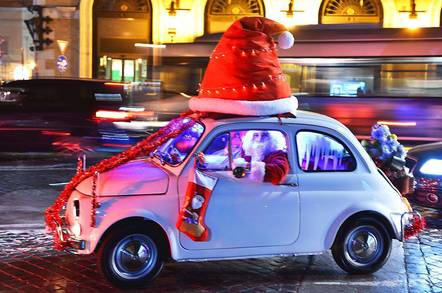
Santa Claus, as we know him today in American, was made popular throughout the world by Coca Cola ads and Clement Moore's story "A Visit from St. Nicholas" ('Twas the Night Before Christmas) so there are many similarities. They all are kind and give presents. Most wear red. Some are fat and short, others are thinner and taller.
In reality, in the beginning there was St. Nicholas, a greek born around 280 AD who became bishop of Myra, a Roman town in the south of Asia Minor (modern day Turkey). Nicholas earned a reputation as a fierce defender of the Christian faith in the years of persecution and spent many years in prison. None of the early representations of St. Nicholas look fat and jolly. As recently proven by forensic anthropological studies of the saint's actual remains resting in a cathedral in Bari, Puglia, Nicholas was an thin, old man, with olive skin, a broken nose with a beard and gray hair. So much for that jolly, red nose and rosey cheeks.
| Still, the legend lives on all around the world, with Santa Claus and Babbo Natale representing the Christmas Spirit--Spirito di Natale. His jolly, kind, all-knowing face is a sign of love to children... a reminder than in fact, they are loved... by God, by Santa and by their parents and siblings. He is a symbol of what Christmas is all about--the Good Life that God gave us. --Jerry Finzi If you enjoyed this post, please tell your friends about Grand Voyage Italy. Buon Natale! |

The Presepe of artistic bread is baked and displayed in the beautiful Chiesa St. Isidoro Agricola (...of the Bakers). St. Isidore was built in 1643, belonged from the beginning to the Society of Bakers.
The Presepe is made completely out of bread, a representation of the importance and symbolism of bread to Catholics... Bread is the Christ. All the characters are made painstakingly by the skilled hands of the bakers.
The Presepe di Pane is on display from December 9 to January 6 hours 9: 30-12: 00 16: 00-19: 00
If you enjoyed this article, please SHARE it and LIKE it on your favorite social media site. Buon Natale!
We also have pages on:
Google+
StumbleUpon
 Chestnuts are a really big deal in Italy
Chestnuts are a really big deal in Italy A good example of harvest time.... in Chianti at the end of September, the fields will be full of people picking grapes from the vines. They fill plastic milk-type crates up with grapes, then carry them to the end of the row and dump them into a big open container that is pulled by a tractor or a three-wheeled Treroute. You'll see many rigs driving down the roads loaded with grapes on the way to the fattoria. You will probably smell the fermenting process when driving by some vineyards.
 Truffles, Truffles and more Truffles in Alba
Truffles, Truffles and more Truffles in Alba - Lucca: Festa della Esaltazione della Santa Croce - September 13, La Luminaria procession. The streets are illuminated with candles during the Luminara di Santa Croce, the principal event of the year in Lucca and part of a series of festivals during September. A wooden crucifix figure is carried along the streets of the old town center illuminated by thousands of small candles. There is also the "Mottettone" concert inside the cathedral and fireworks on the banks of the river.
- Panicale: From Sept 8th to 11th, Panicale holds their Festa del l'uva - grape harvest festival, an interesting event dedicated to wine in Umbria. You can taste local dishes at the tavern and, of course, the excellent local wines.
- Lombardy, Emilia Romagna and Tuscany: Gran Premio Nuvolari - one of the most prestigious Grand Prix of classic cars in Italy, the Grand Premio Nuvolari (named after Tazio Nuvolari, one of the greatest drivers in the history of car racing), which takes place every year from 18th to 21st September. Over 500 drivers, in 250 classic cars start out from Mantua, driving over 1000 km through many towns in Lombardy, Emilia Romagna and Tuscany. For instance, on September 20th the cars will parade through the Piazza del Campo in Siena from 12:00 am to 2:30 pm. More info HERE.
- Aquaviva: The Viva Rock Festival will be held from September 7 through 11 in Acquaviva, a few kilometers from Montepulciano, featuring rock, world music, electronic music and reggae, admission is free for all the concerts.
- Siena: There seem to be festivals going on all the time in Siena. In September you might visit Siena and see a procession of hundreds of people dressed in medieval costumes or red devil costumes.
- Chianti: The olive harvest takes place in November. There are farm rentals (agriturismo) where you can actually take part in picking the olives. A perfect time to buy some oil.
- Chianti: The chestnut harvest takes place between the middle of October and the middle of November. Chestnut flour is available a month or two after harvest. Chestnuts are grown in many parts of northern Italy.
- Marradi: Northeast of Florence in the town of Marradi is the The Marradi Chestnut Festival, running every Sunday in October
- Pisa: Within the province of Pisa, the prestigious International Market and Fair of the White Truffle at Corazzano.
- San Miniato: In San Miniato, one of the more important truffle towns, you’ll have the chance to taste and buy one the most prestigious food products you’ll ever find on the first weekend in October. This is a "preview" of the main San Miniato market and fair that takes place every weekend in November.
- Asti: Festival Delle Sagre is a one day event with food and wine from 40 villages in the area. It’s only 45 minutes from Turin. Sample tagliatelle with porcini mushrooms, frittata with chickpea and herbs, fried frog and cured donkey meat. Processions and live music entertain the large crowd throughout the day and into evening. www.festivaldellesagre.it
- Alba: In October there is the Fiera Internazionale del Tartufo Bianco--a festival for the Tartufo biano, or white truffle, is a veritable celebrity in Alba and the month-long autumn festival devoted to the famous fungus is a must-see. Last October, Prince Albert of Monaco made a royal appearance at the opening ceremonies, a fanfare fitting for one of the world’s most sought-after delicacies. www.fieradeltartufo.org
- Caluso: 20 miles outside Turin in the small town of Caluso, every September droves of wine enthusiasts celebrate the locally harvested grapes at the Festa dell’Uva. www.festadelluva.tn.it
- Negroamaro: In Puglia, the Negroamaro Wine Festival is held in Brindisi every November.
- Gubbio, Umbria: “Il Mese del Tartufo” (the Month of the Truffle) from November 19-20 and November 26-27, with events centering around different truffle-related products and other Umbrian specialties.
- Città di Castello: This Umbrian town hosts the Mostra Mercato Nazionale del Tartufo Bianco (White truffle festival) in early in November.
- Piegaio: The Festa della Zucca (Squash Festival) is held in early October in Piegaio, a small town near Lucca. Growers from across the region head to the village to show off their biggest and best produce. There are also stalls brimming with squash-based dishes (as well as local honey, meats and cheeses) and even dolls made out of the fruit.
- Montalcino: Beekeepers Week in Montalcino, Tuscany is held in early September. Honey tastings and all sorts of foods made with honey.
- Bra: The Slow Cheese Festival happens this year from September 18-21 in Bra, Italy, a town in the northern Piedmont region, which is also the birthplace of Slow Food movement.
- Buonconvento: In early September the walled town of Buonvonvento hosts a beer festival.
- Sigillo: From Dec. 7-8, the town of Sigillo near Perugia, Umbria hosts a Mostra Mercato del Tartufo Bianco.
- Piacenza: This is just one town that holds a Chestnut sagre, but there are more.... in Soriano (VT), Valfocchiardo (TO), Val di Susa, Castel del Rio (BO) and Cuneo.
- Vicenza: Festival Nazionale dell'Enoturismo, a Foodie festival that takes place every October in Vicenza.
- Ferrara: Ferrara Ballooning Festival is the most important hot air balloon event in Italy. September 9-18.
- Verona: The Tocatì, the International Festival of Street Games in Verona, is an interesting opportunity to check out games, sounds and flavors of the past. Sept 15-18.
- Greve: In Greve in Chianti there's the Expo del Chianti Classico celebrating the ubiquitous Chianti wine. There's music, lessons on wine and food sampling. There will be over 60 wine producers attending. In 2016 the event will be from the 8th to the 11th of September.
- Milan & Turin: The MITO music festival takes place in September in the cities of Milan and Turin, and lasts throughout the month.
- Ciminna: San Vito's day is celebrated in Ciminna, near Palermo, Sicily during the first week of September. There is a large parade where scenes from the life of the Saint are re-enacted. A livestock fair is also organized.
- Florence: One of the oldest September festivals takes place in one of Italy's best known and most beautiful cities, Florence--the Feast of the Rificolona.
- Pienza: The Pienza Pecorino Fair and "Cacio al Fuso" takes place on the first Sunday in September. Pienza is known for the pecorino (sheep cheese) in Italy and a wide range of excellent cheeses is available to be tasted and bought during this fair. The Cacio al Fuso is a cheese rolling competition--contestants roll a round of cheese to see how far it goes.
--Jerry Finzi
If you enjoyed this post, please don't forget to share it with your on your favorite social media site. Ciao!
 Doric columns
Doric columns In hindsight, I wish we had at least done an early morning side trip to Paestum. It's located in the part of southern Italy known as Magna Graecia, which used to be settled by the Greeks long before the Roman Empire. The ruins of Paestum are famous for their three Greek temples with massive, intact Doric columns dating from about 600 to 450 BC. All structures are built from the local bedrock--travertine. Also intact are the foundation walls of many parts of the ancient city, an amphitheater and paved roads as well preserved as the Appian Way in Rome.
 Nearby Agropoli, an ancient Greek port city
Nearby Agropoli, an ancient Greek port city The modern town of Paestum, just south of the archaeological site, is a popular seaside resort, with long sandy beaches where many Italians spend their Ferragosto summer holiday in the month of August. However, if you want to relax and enjoy the flavors of this region, make your hub in the beautiful port town of Agropoli... a seaport just to the south, with its town hugging the cliffs above. The town is definitely worth more than just an overnight stay. Some might call it a romantic getaway.
Another important aspect of the area is the raising of buffalo to produce the famous mozzarella di bufala. You may visit local farms to see the prized buffalo being massaged and pampered, as well as see how the fresh cheese is made.
| If you go: By Train Catch a train from Salerno or Naples to Paestum station. Buy a two-way tick if you need to return. I have read that the ticket machines in the Paestum station rarely work. By Boat There are ferrys during summer months from Salerno, Naples, Positano, Amalfi By Bus Buses run throughout the Campania regions, especially in Avellino province, picking locals up for various points and taking them to the site for €9 return. Paestum Tickets You can buy separate tickets for the archaeological site and the museum but if you're visiting both it is cheaper to purchase a combined ticket (about €6.50). There are various categories of discount. This is an Italian national monuments. Check for free entry for seniors and handicapped. The open air site is open daily; the museum is closed on the first and third Mondays of each month. |
Ok, I know that we fell into this trap ourselves when we traveled throughout Italy, but I'm telling you all to "Do as we say, not as we did!" You shouldn't spend all your time waiting on unimaginably long lines just to get into must-see tourist sites. There's real life out there away from the tourist throngs. I would suggest allocating only about 20% or less of your time trying to get into the "must see" sights that every other tourist is trying to see and 80% actually experience the Italian way of life.
As difficult as it is, try not to go where every other tourist is going. I know this is hard for the first timer to Italy--it was for us--to decide not to see the Sistine Chapel or Michelangelo's David. We spent a nightmarish, sweaty, stuffy, exhausting morning being enveloped and shoved by throngs of cruise ship tours in the Vatican Museum (Sistine Chapel included) and St. Peters--and believe it or not, this was a so-called "private tour" with our own personal guide! Sure, it was great seeing the Sistine Chapel, but as museums go, the Vatican Museum is not up to world standards in terms of comfort, proper care of the art displayed, lighting, cleanliness or how it handles the huge crowds they stuff into the place. And speaking as an artist, there was no opportunity to sit and admire Michelangelo's creation properly. (Read about our Vatican tour HERE.)
You can't possibly see everything in Italy. When I first started planning our trip ten months before we left, every time I zoomed in to a different part of Italy on Google Earth I kept finding more and more outrageously wonderful things that I added to my pin map. I still have those Google maps saved in case we go back to Italy. Even when we were in one region, like Puglia, for example, I had dozens of things pinned in the area that we never got to see--that we just didn't have time to see. Still, I looked at it as having a list of options for a given area we happened to be in, knowing that we'd never get to see all of them.
There are 46 million tourists swooping down on Italy every year with the "high season" getting wider and wider (we went in October... I can't imagine how much more crowded the tourist sites are in late spring or summer!) But you have to remember, that almost anywhere you go in Italy, in every region, there is a plethora of art, palaces, aqueducts, museums, vineyards and great food everywhere! Even the smallest villages we passed through were worth a stop, a picnic and offered great subjects for photography. Castles... they are everywhere. Hill towns?--Where aren't there any? Roman ruins? Everywhere you look. Great architecture and churches? Fine art? Great wine? Yes, even in the small villages and towns. Great food? Pick a cuisine--any of the 20 regional cuisines in Italy!
So, take your time and by all means, slow down, and plan on savoring each and every bit of Italy and you'll find a higher degree of appreciation and satisfaction for La Bella Italia. Don't rush through anything. If you find that the lines are way to long, consider getting out of line and walk the other way... find something else around the next corner, in the next piazza or in the next village.
Learn at least a little Italian before going to Italy. Talk to the ladies in the alimentari when buying your picnic supplies. Point a lot... smile a lot. Try talking to taxi drivers. I found them to really open up when you talk to them and ask about their lives. Learn basic phrases like Questo or Quello (This one... that one), Come si chiama? (What is this called?), Dove ___? (Where is found ____?), Grazie (thanks) and Per favore (Please).... and of course, Grazie (thanks--and say it properly: grat-zee-EH). You might not understand everything they say back to you but you will be experiencing the people of Italy. Take their photograph to remember their smiles. Give them your smile in return.
Remember, you are going to Italy to see, to smell, to taste and to feel... and to take home souvenirs... in the literal sense of the word... memories. Your goal should be to come back home with a part of the Italian lifestyle as part of your soul. Italia will never leave you...
--Jerry Finzi
If you enjoyed this article, please SHARE it with your friends and tell them to stop by Grand Voyage Italy's blog. Grazie mille.
There should really be a tiered level of visits to the Vatican Museum, sold through lotteries. Those proving some art credentials--like academics or students of art--should be allowed a different time of day where they can spend a decent amount of quiet contemplation--something that isn't an option today. To stop the wear and tear on the museum itself (the patterned floor tiles are getting worn through!), the general tourist public should only be allowed to visit a smaller section of the museum, with a limited number of people accessing the Sistine Chapel at the same time. Or, as they have done with other fragile tile or mosaic floors in other churches in Italy, put raised walkways so tourists' feet never touch the tiles. Also, no children under 10 should be allowed. Visitors should also be expelled whenever they break the rules of the Church, like men wearing hats. ---JF
The cards are very beautiful and interesting. A deck of Italian cards consists of forty cards, divided into four suits: coins (Denari, often looking like sunbursts), swords (Spade), cups (Coppe) and clubs (Bastoni--not the same as our clubs. Theirs are actual clubs or bats.) The number value of the cards range from one through seven (not up to ten like our cards). There are also "picture cards" in each suit: Knave (Fante), Knight (Cavallo), and King (Re). The Knave is man standing. The Knight always has a horse somewhere. The King wears a crown. Count the symbols for the number value of the cards. The Ace (Asso) of Coins is a bird with circle in the middle, and other Aces always have one of their symbol.

Briscola is also played in Croatia, Libya, Spain and Portugal, Malta, Slovenia. and even Puerto Rico, its poularity more than likely spread by sailors who played the game in various ports and aboard ship. It is played by two to six players played with a standard Italian 40-card deck. The game is said to originate from an older Dutch game, evidenced by the word cappotto yelled when one team wins--very similar to the Dutch word "Kaput" meaning to be defeated (though capotto means jacket in Italian).
Basically this is a trump following game, although the rules allow the trump to be suddenly changed by players, making it a bit more unpredictable. The four and six player versions of the game are played as a partnership game of two teams. Each card has its own point value-- Ace 11, Three 3, King 10, Knight 4, Jack 3. A deck has 120 points total. To win a game, a player or team must get more points than any other player.
Game Play
After the deck is shuffled, each player is dealt three cards. The next card is placed face up on the playing surface, and the remaining deck is placed face down, sometimes covering half of the up-turned card. This card is the Briscola, and represents the trump suit for the game. Before the game begins if a player has the deuce of trump he may retire the briscola. This move may only be done at the beginning of the game or first hand. Before the first hand is played (in four player game), team players may show each other their cards. Dealing out cards and the players turns go in a counter-clockwise direction. The player to the right of the dealer leads the first hand (trucco) by laying one card face up. Each player subsequently plays a card in turn, until all players have played one card. The winner of that hand is: if any briscola (trump) has been played, the player who played the highest valued trump wins; or if no briscole (trumps) have been played, the player who played the highest card of the lead suit wins. Players are not required to follow suit, that is, to play the same suit as the lead player.
The winner of a trucco collects the cards he just won and places them face down in front of him. Each player maintains his/her own pile. Then each player draws a card from the remaining deck to replace the one previously played, starting with the player who won the trick, proceeding counter-clockwise. The last card collected in the game should be turned up and become the new Briscola (trump). The player who won the trucco plays the first can. During the game and only before the next to the last hand is played, a player who draws the card with the seven (7) of trump can take the briscola. This may be done only if the player has won a hand. Before the last hand, people in the same team can look at each other's cards.
After all cards have been played, players calculate the total point value of cards in their own piles. For multi-player games, partners combine their points.
Scopa is the other popular card game played in Italy. Scopa in Italian means broom, and the game is one when a player sweeps all the cards from the table. It is an easy game to learn but difficult to become really good at it. It's a game of both skill and luck. Again, this is an excitable game, with body language, hand gestures and a bit of cursing being the norm during play. It is also played with the 40-card deck of cards, either with 2 players or partnerships from 4 to 6 players.
Members of the same team sit opposite each other. Only one player deals the cards and hands out 3 cards to each player, and then deals four cards face up on the table in front of him. A table card may be dealt before the deal begins, immediately after dealing a card to one player, but before dealing to the next player, or after dealing all players all three cards. The first player (going counter-clockwise again) decides from one of two options: place a card on the table, or play a card to capture one or more cards.
A capture is made by matching a card in the player's hand to a card of the same value on the table, or if that is not possible, by matching a card in the player's hand to the sum of the values of two or more cards on the table. The card from the player's hand and captured cards are then placed face down player and considered out of play. If the player captures all cards, this is called a scopa, with additional points awarded at the end hand.
After the players have played all three cards, three new cards are dealt to each player, with the new play starting with the player on the dealers right side. That player then begins play again. No additional cards are dealt to the table. This hands are repeated until no more cards remain. In the last hand, the player who most recently captured is awarded any remaining cards, and points are calculated for each player or team.
When calculating scores, each scopa (sweep) nets one point. Then a player or team gets one point if he took the highest total number of cards, the highest number of Coin suit cards, the seven of Coins (called the settebello). Calculating the primiera (prime), is also usual. To award the primiera, each cards is given a value. You sum up the points for each card and the highest total is the primiera. The primiera is worth one point towards the total score.
There are many variants to the traditional game of scopa, just like in poker. One of the most popular is the Asso piglia tutto (ace wins it all). The player that plays an ace can take all the cards on the table. This can count as a sweep or not, according to the variant in use.
The next time you see men playing on their little table in the piazza, stand for a while and watch. See if you follow the play. Just don't make any side bets...
--Jerry Finzi
If you enjoyed this post, please share it on your favorite social media site. Grazie!
Festival Dates for 2016: September 8th – 11th
The 800 pound statue of the Madonna dei Martiri procession runs through the streets of Hoboken on Saturday, September 10th. As you read my article, you'll discover that there's more than the Festival itself to make the trip worth it...
 This is what the Sagre used to look like
This is what the Sagre used to look like My Mom and Dad both grew up in Hoboken, with many other Italian immigrants, many families (like my Dad's) were from Molfetta. In Molfetta in early September they have a feast to honor the Madonna dei Martiri (Madonna of the Martyrs). When I was a boy I went to the "feast" (as we called it) many times with my Parents, Uncles, Aunts and Grandmother... there was a grand procession, where young and old men would carry the hefty statue of the Madonna through the streets. There was usually a raised stage set up on a corner with Italian singers, dancers, and even dramatic short plays from the old country. Then there was the food. You name it and it was there. All manner of Italian delicacies... spaghetti dinners on long tables set up at curbside, meatball or sausage and pepper sandwiches, deep fried calamari, zeppole, pastries and much more.

Of course, in the old days the town's fame came from it's most popular and well known product--Frank Sinatra. My Mom went to grade school with him (and said that all the girls didn't "go" for him because he was so skinny). There is a wonderful waterfront park and promenade named after old Blue Eyes--Sinatra Park, which is where the Italian Festival is held.
Nowdays, he has been replaced with the newcomer, Buddy Valastro, of Carlo's Bakery and TV's Cake Boss fame. But Hoboken has a lot more going for it than its Italian heritage, Sinatra or Buddy's overpriced fondant covered cakes. We rediscovered it's charm and beauty while going to the Italian Festival last weekend. But, there is both good news and bad what we discovered there...

Ok, so the old style Italian Festival is virtually dead and gone. It's a lot different from the Festa of the Madonna dei Martiri when I was a kid. After all, when you look at the faces in this town all you rarely see one under 30 years old. I wonder how they can afford to live in Hoboken.
 It used to point straight down to the seedy bar, now it points around the corner to the fancy new place
It used to point straight down to the seedy bar, now it points around the corner to the fancy new place And that's not the only thing. When I was a boy, my Dad would take me down to the Hoboken waterfront to tell me about his history. He and his brother Peewee had a "three legged horse" (merely lame) they used to sell fruit and veggies to the sailors coming from the many large ships that docked along the waterfront piers. There were many bars in Hoboken (every other storefront, as he tells it) and houses of ill repute. This was a rough, tough and seedy seaport town. The famous Clam Broth House served raw bars in just as raw an atmosphere with clam shells tossed onto the tiled floor into the sawdust. (Now it's moved around the corner and is a fine dining establishment). Whenever my Dad took me in there I couldn't stand the smell of beer and iffy clams.
Sinatra's mother, Dolly (as my Mom told it) performed abortions in the back room of the family's bar. Dolly became politically active because of her inside "connections" to all the local political bosses. This was--and still is--a very "connected" and perhaps corrupt town, but the fruits of these politicians and developers have left something positive: The new waterfront.
This is the gold that Hoboken offers to visitors. The revived waterfront is every bit as good as the promenade down in Battery Park City--but with obviously better views looking back on the Manhattan skyline. From a single viewpoint, you can see the towers clustered in midtown and the newer towers clustered around the Freedom Tower down at the tip of the island. You can see all the way north to the George Washington Bridge. The river is alive again with lots of boat traffic and ferries going into many stops around Manhattan. And the best thing is the way they developed the waterfront itself. Paved paths, green spaces, trees and even a curved walkway that leads you from the shore onto a man made island park complete with a playground for the little ones.
 The best view of the Big Apple
The best view of the Big Apple We also had a chance to walk over to Carlo's Bakery (our second time there) thinking we'd pick up some pastries and see how their new renovation looked. Though over a block long like the first time we went there a year or more ago, the line inside was still long. We took a ticket. We were #77 and they were "Now Serving 44". Yikes. A quick calculation of 33 people at 4 minutes average apiece meant we'd be waiting over an hour and a half to be served. They only had 3 people behind the counter! So at best, 30 minutes to wait? To be honest, the last time we got cake from Carlo's we didn't think it was all that great... you see I grew up in Hudson County and have had Italian pastry and cakes from many great bakers in the area. Carlo's ranks 2.5 on a scale of 5 to me. So we left. Sorry, Buddy.
One more little detour was to take Lisa and Lucas down a few blocks to the old Erie Lackawanna Railroad Station--and old world gem, sort of a smaller version of Grand Central Station in Manhattan. It was beautiful, and is still a functioning train station. You can see its beauty in various films, like the train station scene in Julie & Julia (2009). Lucas noticed the fancy staircase right away and said it reminded him of that scene in the Untouchables when Elliot Ness has a shootout while trying to catch the baby carriage rolling down the stairs. It was like stepping back in time to the 1920s or 30s.
--Jerry Finzi
If you enjoyed this post, please tell your friends about Grand Voyage Italy... and keep coming back. Ciao!
It's Hot!
Before we took our trip to Italy, I researched the weather extensively... or so I thought. I had all sorts of long range forecasts, histories of statistics of previous years' weather and temps, and even got first hand personal advice from Italians and travelers on the many online travel forums I frequented at the time. Nothing prepared me for the heat and humidity we encountered... and this was during three weeks in October! We saw many days in the 90s, usually with high humidity.
This got me thinking of my niece and her son... they are taking a tour of Italy and Greece in July. July! OMG! I don't know if I could do all the things we did in Italy in the heat of summer. Even in October, Pompeii was roasting us (thank the Lord for those fresh water fountains that were there), Amalfi made us sweat more than we thought our bodies could, and the Vatican Tour exhausted us beyond belief due to the extra BTUs produced by the throngs of tour groups pressing bodies like cattle trying to get through those narrow, un-airconditioned, stuffy, humid palace halls.
Curiously, in the southern province of Puglia, it seemed cooler than up in Tuscan or Rome--the sea breezes kept us more comfortable. Walking the streets of Rome we found especially grueling (like Manhattan, big cities hold heat), but not as awful as I imagine it must be to deal with the summer heat in Italia. In fact, summer temperatures in Rome can reach as high as 104F!
So I would strongly recommend when planning a trip to Italy that you plan it in the shoulder season months in early spring--March, April, May--or the fall during late September, all of October up to the first 2 weeks of November. After that, the rainy season comes to most of Italy.
But in case you have to be in Italy during summer, I've put together some tips on beating the heat when in Italy during the hottest months... especially helpful for those of you traveling with very young or older people susceptible to overheating and exhaustion.
 Sweltering crowds at the Uffizi in Florence
Sweltering crowds at the Uffizi in Florence There are many things to see in Rome, Florence and the rest of Italy that don't require standing on long lines. Think out of the box. Even if you throw away your "must see" list of the top tourist attractions, you will still enjoy yourself and get a good taste of Italian life.
Don't plan anything that requires long lines. I know this rules out things like the Vatican, the Uffizi in Florence, but believe me, I witnessed the long lines in October and can't imagine how much longer they get in the high tourist season. The lines at the Vatican can be three hours long unless you have booked a private tour, and even though St Peters is free to all, everyone has to go through the long lines for a security check... up to 3 hours in high season. You can try going either early (before 9am) or later in the afternoon when the tourist groups are gone. They are open until 7pm, so if you get there for 5pm you'll have shorter lines and still have some time to walk through. On Sunday's if you want to attend mass, again, the earlier the better.

You should bring a refillable bottle and trust the fountains for refilling your bottle unless it says "non potabile". Buying water bottles or sodas at tourist snack wagons will begin to add up, so refilling your own will help hold down costs. (I recommend this Thermos brand bottle. With some ice it keeps drinks icy cold for hours). Select a travel bag with a large enough drink bottle pocket. You won't always find a vendor or bar when you need one, but you will find water fountains... many times, ancient Roman ones with brass faucets sticking out of them. Consider bringing a bandanna that you can wet and tie around your neck, or fold and soak it and put it under your kids' caps. Lucas loved this technique for keeping cool.
| Light Clothing: Both light in color and light weight. I brought some travel shirts that were fine, but even on the hottest days they still held sweat. Lighter colors will reflect the sun. Lighter weight fabrics are also easier to pack. Bring a small spray bottle both for a cooling mist and for spraying wrinkled clothing--hang them on a travel folding hanger and the the wrinkles fall right out. |
| Wet Ones Singles: These little packets of coolness are the best thing for cleaning a sweaty brow or neck, keeping your kids cool under pressure and wiping on your arms and legs for some refreshing evaporation. And they really don't take up much room at all. Buy a pack of 144 Wet Ones Wipes and stuff them in your luggage. Easy to stuff a handful in your day packs when doing the tourist thing. |
Italians don't go out in the hottest part of the day. They take long 3 hour lunches called a riposa--a siesta, if you will. Most go home for lunch. Think like an Italian and don't plan a lunch in small towns after 12 noon or you won't be able to find a restaurant open for lunch (in larger cities like Rome or Florence this isn't a problem). But in most other towns, look for bars--in Italy, a bar is a place to get snacks, pastries, sandwiches and espresso. Plan picnic lunches and a rest period in the middle of the hot day. Sit under a tree, have your lunches, dangle your feet in a stream or fountain, or plan to visit a cool church. It's a bit cooler inside old castles and churches with their thick walls and marble floors. When you can, get out early to get your tourist things done, relax back in your hotel of rental apartment like an Italian, then go to museums and such after 4pm when most of the tour buses and cruise ship crowds are long gone.
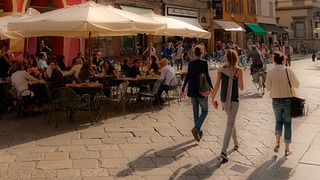
Do your long walks in the morning and late in the day when the sun is low. Plan indoor things for midday... or even plan on spending restful time in your air conditioned hotel room until later in the day. You won't miss anything... Rome, Florence, Pisa, Amalfi, Venice... they're all still there later in the day and in the evening--and less crowded.
| Wear Caps: This is especially important if you're prone to sunburn and to keep your kids from getting overheated. Don't worry about the non-cap wearing Italians who spot you for the tourist you obviously are. They can spot us anyway, even without a Yankee cap. Soak your kids' caps in fountains and slap them back on their heads to keep them cool. |

Yes, I'm serious. If you're traveling with a few little ones, pack a couple of small, good quality water pistols and let them shoot each other to their little hearts' content. They will have less tantrums and meltdowns if they're getting cool by getting wet. (On occasion, I'd sprinkle some water down my boy's neck to cool him down). If you're tight on space, pack a couple of kitchen sized plastic hypos. They can suck water up from a fountain and shoot pretty far with these things.
| Rent a Car: Not in the big cities, but if you want to explore the Italian countryside, by all means, rent a swagger wagon and crank up the air conditioning. Some cars, like the newer Fiat 500L (they call it "the Large" in Italy) even have a glove box cooler that works fairly well for a water bottle or two. |

Yes, they have water parks in Italy too. Beautiful, big ones. Personally, I think this would be something a family might want to do only if they are staying for an extended period of time in Italy... after all, it's not like you'd experience anything about the Italian culture in a modern water park. But if you are staying in a hub location for three weeks or more, you might want to take a break and treat the family to some wet, cool fun at a local water park.
For example, just to the east of Venice in the resort beach town of Jesolo is Aqualandia, a large seaside water park 2 huge lagoon sized pools with a tropical island and other water slide attractions. One of the oldest and most famous water parks is Aquafan in Riccione one quarter of the way down the Adriatic coast side of the Boot. Again, I'd only recommend this for long term stays in Italy when your family needs a break from all the typical tourist activities and just wants to let loose and cool down. Personally, water theme parks are not my thing... I'd rather hit the real beaches in Italy...
| Try Walking Sandals Instead of Sneakers: If you decide to try this, find a good quality walking (hiking) sandal and wear them a while before your trip. Make sure that you will not develop any blisters on longer walks. If you find the right pair, they will save space (no sneakers) and save your feet from sweating on the hottest days. |

Only "Mad dogs and Englishmen go out in the midday sun"--that's what Noel Coward said. I'm sorry to say that my wife hasn't a clue as to what side of the street to walk on when it's hot and sunny. Lucas and Lisa might get miffed when I turn a corner and abruptly say "let's walk on the other side". They don't notice the broiling sun on one side and the shade trees on the other. Maybe I notice because I'm a lot older than both of them put together, I'm carrying more weight than ever before, and have that little balding spot that burns way too easily when I forget my cap. Perhaps the other reason is because light is my science--being a professional photographer. I pay attention to light and shadows. Walk on the shady side and stay 15 - 20 degrees cooler. Some walks in Rome, for instance, are on very long, sunny boulevards. If you're lucky enough to be walking in a town like Bologna, you can walk for 0ver 40 miles of arcades and stay out of the sun.

A battery operated fan can be useful in many situations when traveling in Italy during the summer. You can use it on a train, especially regional lines whose air conditioning or ventilators might not be operating properly. You can put it on your table during meals pointing right at your face and neck. You can use it in hotel rooms where the A/C isn't up to snuff. If you've just endured a long walk up to the Centro Storico of a hilltown, you can find a shady place to sit, pop out your portable fan and cool down for a few minutes until your body temperature comes down a bit. Hint: Wipe your face and neck with a Wet One and enjoy the cooling evaporative effect as you point the fan at yourself.
When you are at your body's limits on how much heat you can endure, look for a public potable water fountain and hold your head under it... wetting your hair and all. If you're sweaty and worn out looking anyway, who cares about how your wet hair will look... just think about how refreshing it will feel. This type of head shower will work especially well in the public fountains in places like Pompeii or towns like Lucca.

By all means, learn how to get a taxi in the large cities. Most cities like Rome have taxi stands where taxis wait on the cue (the one in front is the next one to take a fare). You don't hail a taxi in Rome unless they have a legal place to pull over. They are very affordable and will save both your feet and your sweat glands. Take a taxi up to a city center and then meander casually back to your starting point. In case your driver doesn't have his air conditioner set cool enough, ask "il condizionatore d'aria ... più fresco per favore?" (the air conditioner... cooler please?)
For more about taxis in Rome, read Rome Taxiphobia: Much Ado About Nothing.
Besides taxi stands, ask your hotel for the numbers of the best radio taxi services. They work like Uber--call them, tell them your location (more often, you need to do this in Italian!) and they will show up within minutes. The taxi meter starts running when the taxi driver starts out toward your location. You can also try Uber in Rome and Florence.
In places like the Amalfi Coast, use a car service instead of using the bus. The buses are not always on time and you might find yourself waiting for a long time standing in the bright sun on the side of a very narrow, busy, curvy road.

That's right. One of the easiest ways to cool down is find a gelateria (which won't be too hard as they are everywhere and pretty much are always open) and ask for a scoop (or two) of your favorite flavor. I'm sure you'll even find flavors that you didn't know were your favorite! And don't worry about gelato spoiling your kid's appetites. Gelato, although having less air makes it taste richer than ice cream, is far lower in fat and sugar than ice cream. Have gelato at 5 or 6pm before the 7:30 Italian dinnertime starts. And there's a lot more than just gelato... granita, semifreddo, sorbetto, grattachetta, shakerato (ice espresso). Check out my blog post Frozen... to learn more.

If you are staying in a hotel room or apartment or villa, they will most likely all have shutters. In the U.S. shutters have devolved into being only a decoration, screwed in the open position. In Italy they actually work and are a necessity. Close shutters in your rooms before going out for the day and your home away from home will be cooler when you get back. This is especially important for the midday period. There are a lot of family lunches and naps going on behind all those drawn shutters in Italian towns.

There are lots of steps and sloped walkways in Italy. Hilltowns are everywhere. If you are driving, most parking lots are outside the lower party of hilltowns--you aren't permitted to drive in the historic centers (centro storico). There will be a lot of walking uphill and lots of steps. For example, in Positano (on the Amalfi Coast) there are over 2000 steps that many climb to get high above the town to see the amazing views of the sea. On the Isle of Capri there are steep switchback paths that you need to walk to get down to the beach. Many towns in Italy have similar paths that used to be used for donkeys but are still used for getting from one place to another.
Air Conditioning:
Air conditioning in Italy isn't the same as here at home. First of all, Italians don't like drafts and might keep the air conditioning turned off completely or the temperature set at 78F (25C) instead 68F (20C). I even ran into one hotel that had a master control... you had to call the desk to have them turn it on, and they couldn't change the thermostat. It was one set temperature that definitely wasn't refreshing at all. If their system is broken down, chances are it won't be fixed during your stay.
The best air conditioning I've found is in the bigger cities and from "split duct" systems... the kind where you see a big bulky air handler unit mounted high on one wall. The radiator-looking systems barely cool at all. You might inquire about they type of air conditioning before booking an apartment, especially if you're planning a longer stay. Even in shops, restaurants and museums, I found most air conditioning systems to be way under par from what we're used to in the States. When you do find a very cool setup, savor it... you may not find it again.
There are 4722 miles of coastline in Italy, some of it are rugged and rocky, but most of it are beaches... everything from fine snow white sand to pink, to black to pebbles to rocky. You can take your pick from the chic Lido beaches of Venice to the Italian Riveria to the miles of pristine sand and rocky cove beaches of Puglia. Some beaches are packed like sardines with Italian families on their August holiday, many are overbuilt and crowded, while much of the Italian coastline (including Sicily and Sardinia) have mile after mile of some of the most unspoiled beaches anywhere in the world. And the great thing is (as in Puglia) many are just there for the taking. Free. Mother nature's gift to the tired and overheated traveler. If you want a natural beach experience, check out the Maremma in Tuscany (A Tuscan Beach Vacation: The Maremma). Don't forget to pack swim suits for summer travel!

For nature lovers, trekkers, bikers and even skiers (at higher elevations), there is a great opportunity to stay cool in the Italian summer--the Italian Alps. With over 300 sunny days a year and much cooler temperatures than the rest of Italy, the Italian Alps, with its mix of Italian and South Tyrolean cuisine, is a wonderful way to beat the heat. The food here very different--there might be risotto, lardo (an paper thin-sliced herbed, cured lard) fonduta (Italian style fondue), Canederli (a sort of Matzo ball dumpling in broth), fontina and goat cheeses, sausages, wines and of course, beer. But the real star of the show up north is the world famous, UNESCO World Heritage Dolomites--amazing, jagged pinnacles jutting up from the top of Italy's boot. While there, you can ride cable cars up from the valley or enjoy adventure sports like paragliding, zip-lining, mountain climbing, river rafting and glacier trekking.
 Gassata or frizzante... bubbly and refreshing.
Gassata or frizzante... bubbly and refreshing. First of all, American style sweet sodas might taste the same in Italy, but can be very costly, especially when purchased at street vendors in tourist areas and in restaurants. Another thing on sodas... you will not find diet soda. I didn't see one brand of diet soday in all of Italy when we were there. Instead, order large bottles of "gassata" or "frizzante" (both mean sparkling water). Order one large bottle with meals. If you want plain water, order a bottle of "aqua naturale". Add the word "fresci" or "freddo" to ensure that the bottle they bring has "fresh" or "cold" come from a fridge. Local alimentari (grocery stores) will have large bottles of gassata in their cooler or you can buy a large bottle to bring back to your hotel fridge. The only other soda I'd recommend in Italy is Fanta Aranciata (orange). It is different in Italy--and better--made with natural orange juice... a light, refreshing, sparkling orangeade. Personally, I find the Sanpellegrino orange and lemon sodas way too acidic.
Stay cool, or as Italians put it, mantenere il sangue freddo! (Keep your blood cool)
--Jerry Finzi
If you liked this article, please share it with your friends! Ciao!
You can also follow Grand Voyage Italy on:
Google+
StumbleUpon
Tumblr

Even though Italy is short on cash, in 2017 it is going to start providing high-speed internet access at major tourist attractions, including all of its UNESCO World Heritage Sites.
Also in the plan to get connected: seaside resorts, historic cities, airports and train stations.
But is this just a scheme to get Italian Big Brother watching and following even more people? The Italian government in fact wants to create a nationwide WI-fi network, which users can access via a single personal login, but according to La Repubblica, such a system will allow data to be collected on where tourists are spending their time, and perhaps it's own citizens.
Officials claim that the system would make it easier for people to enjoy Italy's natural and cultural attractions. According to Antonello Giacomelli, from the Economic Development Ministry, "We need to integrate services as much as possible because the digital element is part of the complete visitor experience."
Really? My son Lucas, my wife and I just used our imaginations and our own senses to delve into the history and majesty of the Colosseum when we visited--I had no desire to get on my smart phone to do some surfing. We already have Google tracking us like this. If I even look at a camera I'm interested in, I will then be barrages with camera ads on virtually every site I go onto that uses Googles data. I wouldn't want that after visiting historic sites in Italy (or the Taj Mahal, for that matter... apparently, this is a worldwide effort linking public WiFi with data mining and advertising).
Italy has more World Heritage Sites than any other country--51 at this writing--from Pompeii and Herculaneum, to Palladian villas, the cave city of Matera and Sicily's Mount Etna.
This project is odd when you consider that Italy has a problem with state funding for the upkeep of its historic sites and have already used corporate moneys to restore the Colosseum, Trevi Fountain and more. Perhaps it's a scheme to sell the data from such a national WiFi system to pay for their maintenance.
As for me, I don't need WiFi when visiting such sites and soaking in the historic significance and culture.
Turn off your smart phones and just feel the history beneath your feet!
--Jerry Finzi
You can also follow Grand Voyage Italy on:
Google+
StumbleUpon
Tumblr
Copyright Jerry Finzi/Grand Voyage Italy - 2016
You would think rock doesn’t make for the ideal natural element where to build a town. Yet, the following Italian villages have been able to transform a hostile environment into a uniquely charming place to live.
Carved into the rock and often perched on a hill or plateau, the 20 'borghi' below, selected by search engine Skyscanner as Italy’s most spectacular, all offer stunning views of the sea or surrounding countryside.
Have you visited any of them?
Read more...
Categories
All
1 Making Plans
2 Gear And Tips
3 Getting Around
4 Tuscany
5 Amalfi Coast
6 Basilicata
7 Puglia
8 Rome
9 Postcards
Fotos Di Finzi
History For Italians
Humor
La Cucina & Recipes
More Than Gelato Pizza
More-than-gelato-pizza
News Del Giiorno
Off The Tourist Path
Archive
June 2024
January 2021
January 2019
December 2018
November 2018
August 2018
April 2018
March 2018
February 2018
January 2018
December 2017
November 2017
October 2017
September 2017
August 2017
July 2017
June 2017
May 2017
April 2017
March 2017
February 2017
January 2017
December 2016
November 2016
October 2016
September 2016
August 2016
July 2016
June 2016
May 2016
April 2016
March 2016
February 2016
January 2016
December 2015
November 2015
October 2015
September 2015
August 2015
July 2015
June 2015
May 2015
April 2015
March 2015
February 2015
January 2015
December 2014
November 2014
October 2014
September 2014
August 2014
July 2014





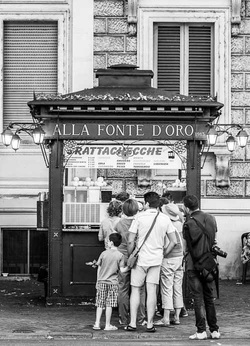





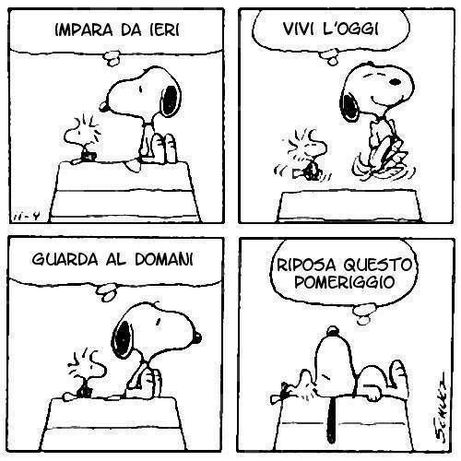













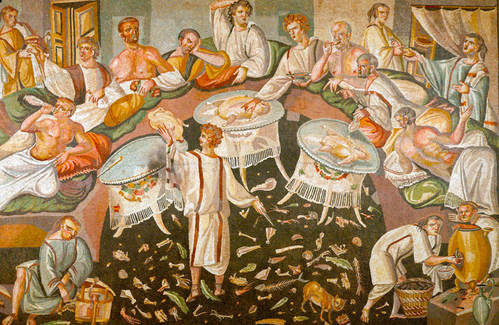












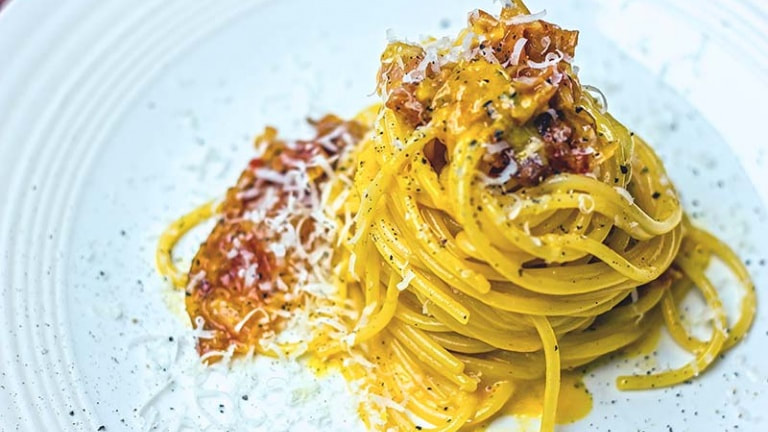






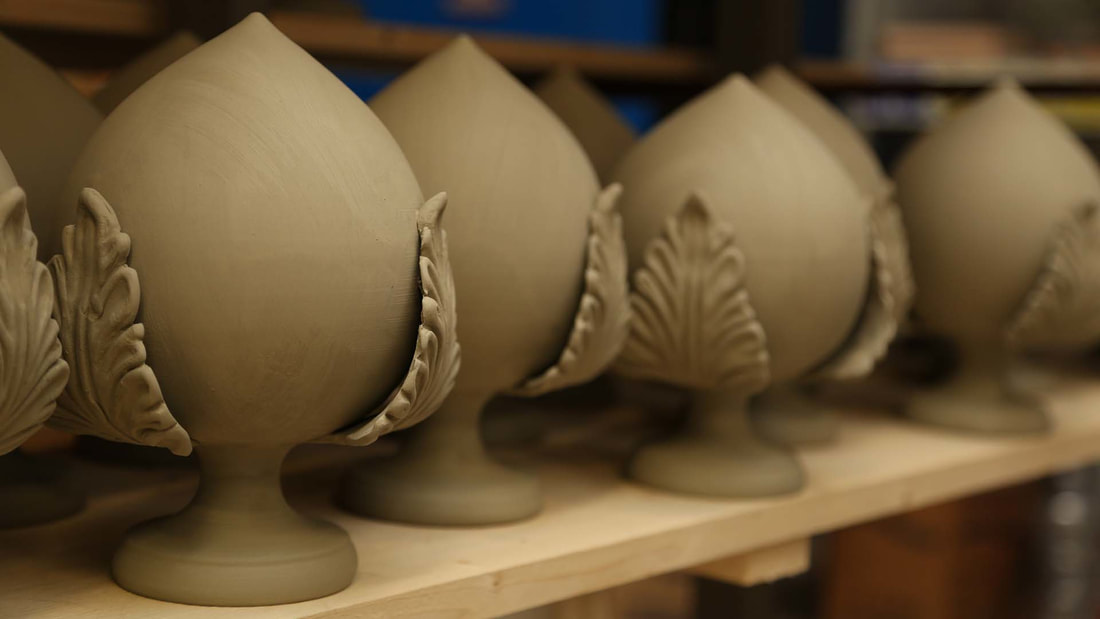


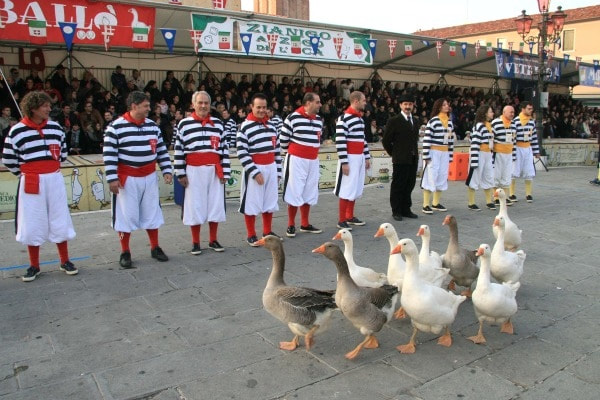












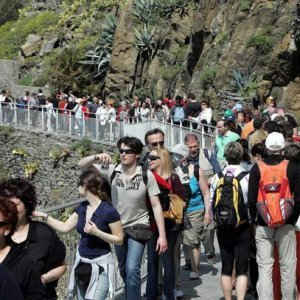










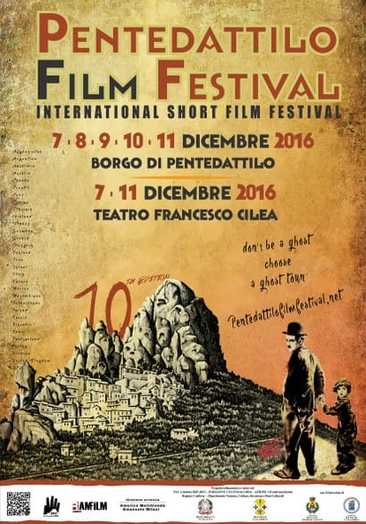

















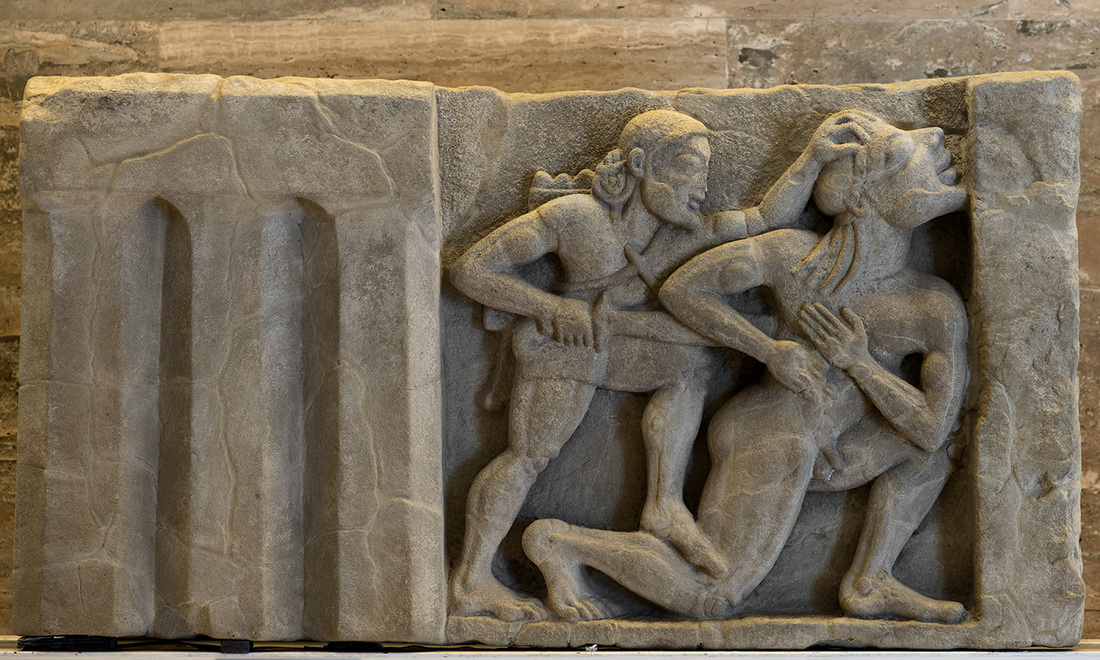
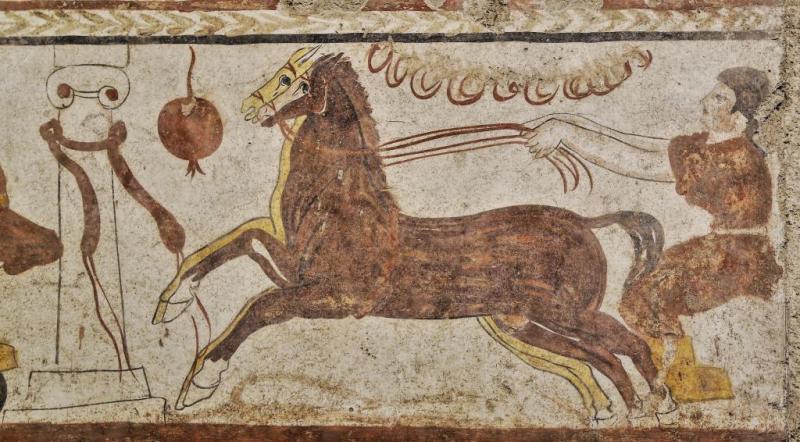
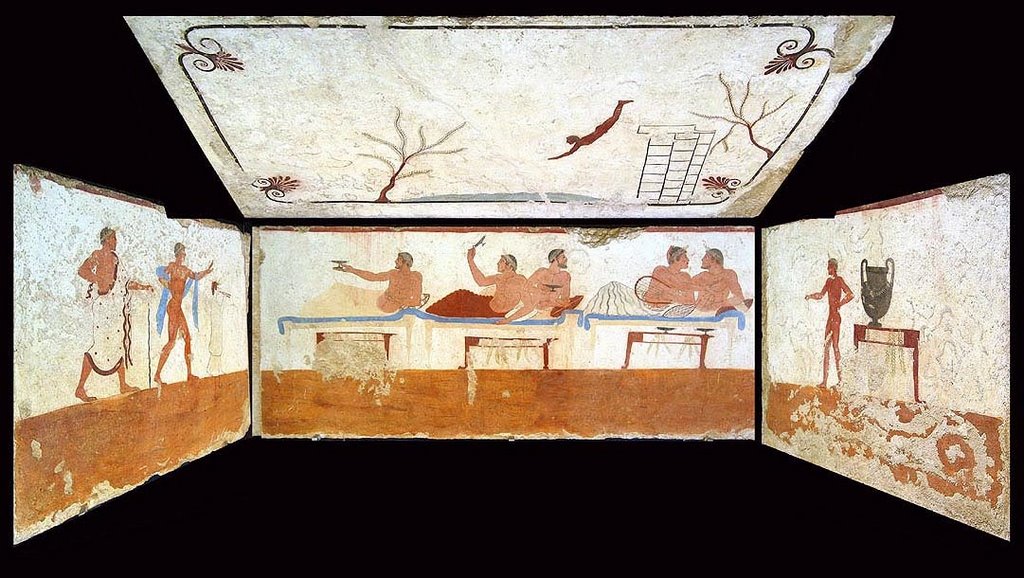






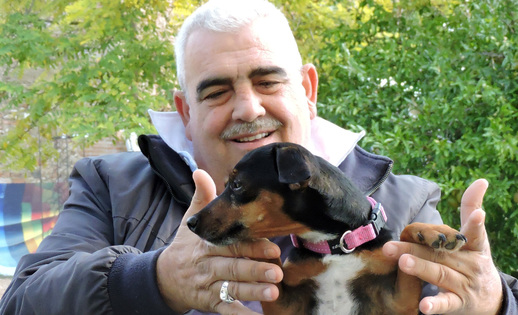


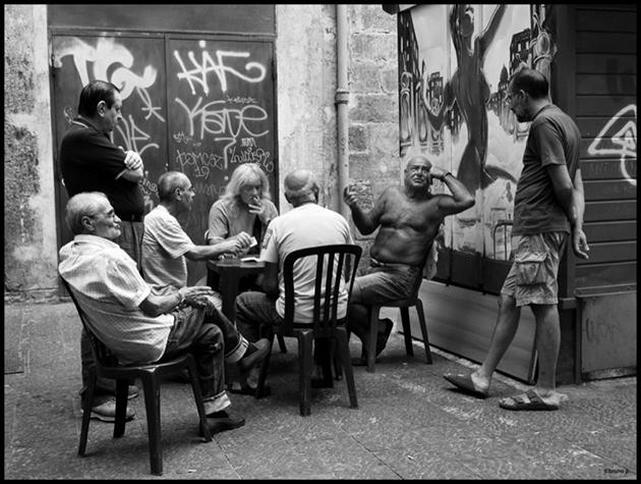


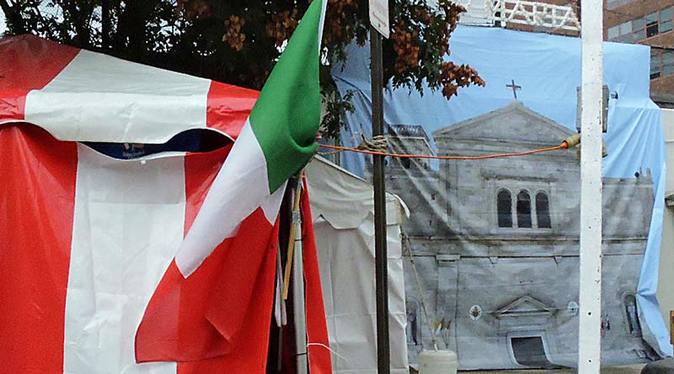




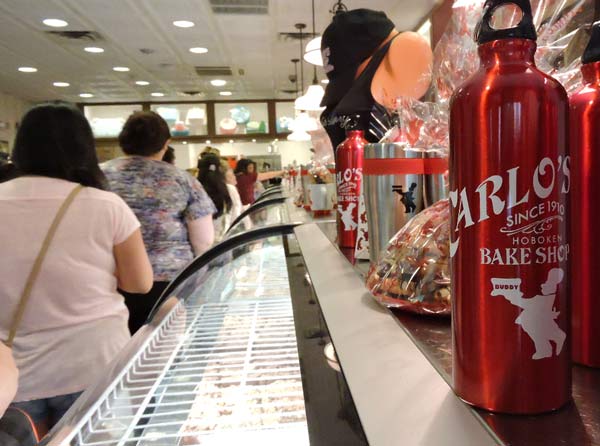




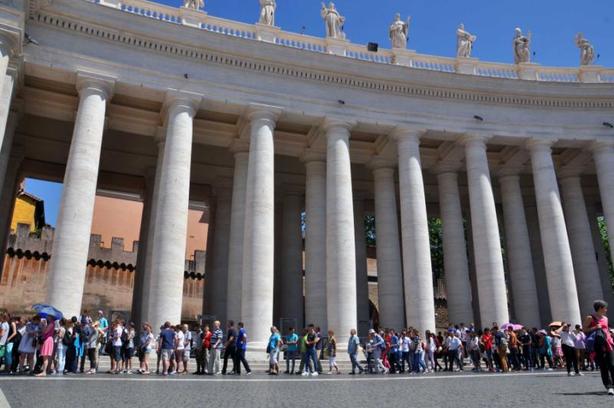






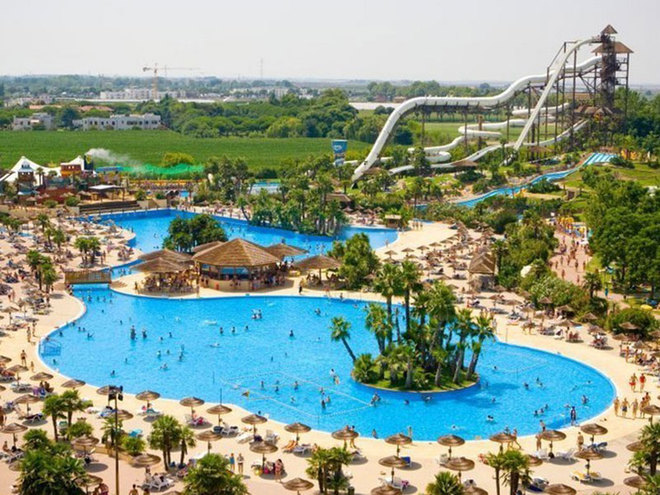


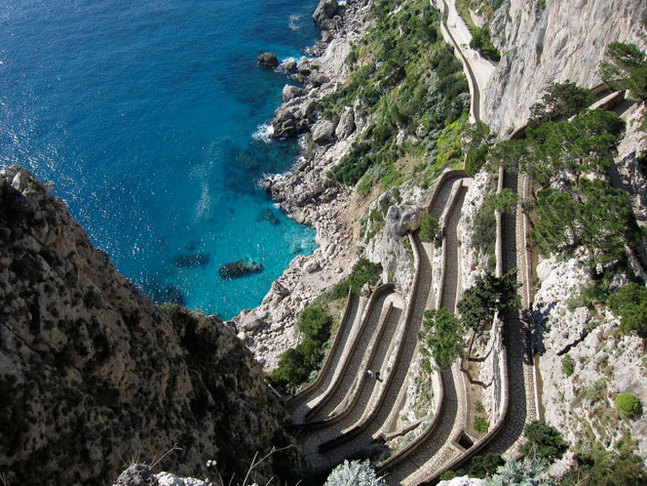





 RSS Feed
RSS Feed
